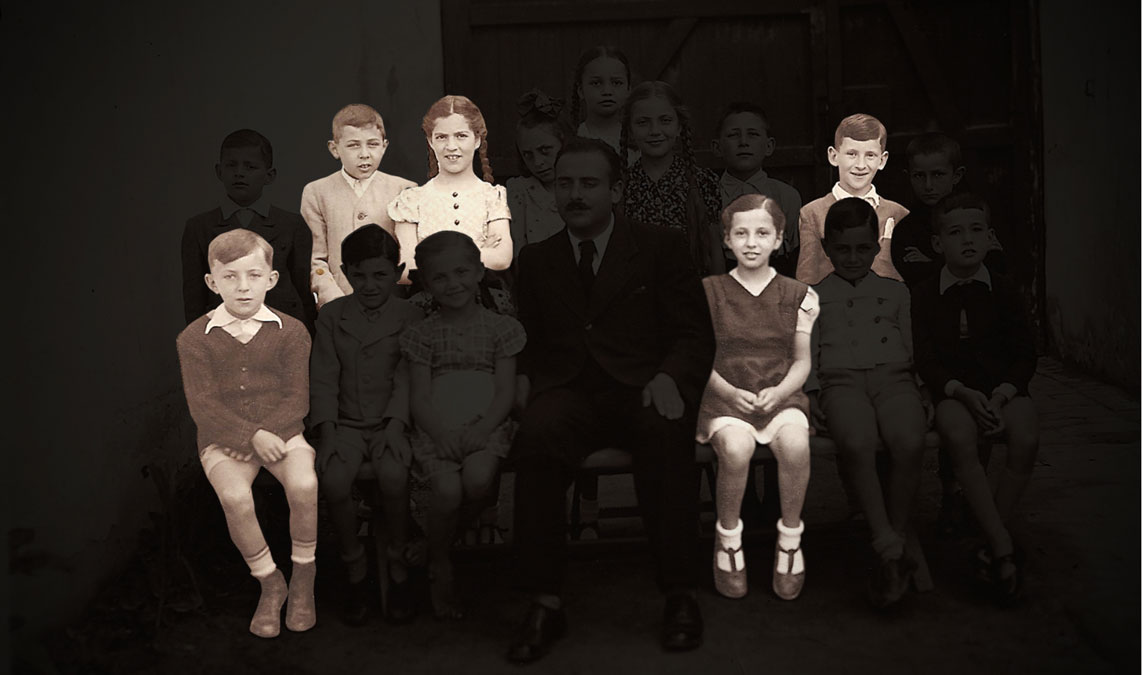Escape From Kalosca
There Was Once…
directed by Gabor Kalman
Filmmaker Gabor Kalman and his family
lived in Kalosca, a small city south of Budapest. Like many Jewish
families who settled there in the 19th century and defined the
city’s middle class, they were business owners; the Kalman family ran a
lumberyard. When the Germans invaded Hungary in 1944, Kalman and his
mother fled to Budapest and lived under false ID to avoid deportation.
Kalman
is now a professor of film and a documentary filmmaker. His family
history may never have become a film had it not been for Györgyi Magó, a
high school teacher in Kalosca, who found him online. Magó had been
looking for members of Jewish families of Kalosca who had dispersed over
the globe after the Nazi takeover.
Though
not a Jew herself, “I was always sensitive when someone was humiliated or
hurt,” says Magó, explaining her motivation in digging into Jewish
history. She had taken an interest in the Jewish residents of her
hometown while researching her thesis in 2003 and participated in the
March of the Living from Auschwitz to Berkenau in 2004.
From
that point on, she tracked down descendants and survivors of the
holocaust –– some in their 80s, and some who were mere toddlers at the
time –– in the U.S., Canada and in Israel. When Magó wrote to one of them
in Montreal and did not hear back from her, she assumed it was because
the elderly survivor would rather not remember her past. But then emails
began pouring in from all over the world; the woman in Canada had
notified all of her relatives.
Kalosca had been an archdiocese founded by King Stephen in
the 11th century, the Catholic church being the sole
landowner. When Jews began to open businesses in Kalosca in the late 18th
century, they were not permitted to live in the town. In 1840 came the
turning point: the archbishop allowed Jewish residents, and 24 years
later the Catholic church donated most of the bricks to build the city’s
first synagogue. What followed was the golden age of Kalosca and its
Jewry, of growth and peaceful coexistence.
After
the Nazi takeover, however, Jews were moved to designated houses on one
street –– until the death trains began taking them away. Kalman recalls
how his uncle bluffed a taxi driver to pull off his and his mother’s
dramatic escape.
Magó
interviews elderly residents of Kalosca: They don’t remember
anti-Semitism growing up. One still corresponds with her elementary
school classmate in Israel; another proudly guards a coat bought from a
Jewish furrier and looks forward to handing it down to her descendants.
One man recalls the dark clouds spreading over them: He and his friends
had been disciplined by adults for breaking windows of Jewish houses. He
says, “Although we would never do anything against concrete people, there
was this anonymous possibility of being anti-Semitic.”
Kalman in his turn interviewed survivors or their children
in Canada and the U.S. One woman relates how a boy in a
concentration camp “saved her heart” by falling in love with her. “I
don’t know why,” she says, “I was so ugly.” There is very little anger
among the survivors –– just sadness, and love, for those who are not
among them now, and for their now-vanished community.
Theo
Alexopoulos’ motion graphics breathe life into what just a few years ago
would have been old pictures on a copy stand. The sepia prints float in
space, out of the past. In one segment, figures in the gelatin-silver
print slowly fade in, as if returning from an enforced oblivion.
Magó
and Kalman’s search culminates in the installation of a replica of a
memorial tablet inscribed with the names of the lost residents of Kalosca
next to the site of the former city synagogue. Magó’s correspondents fly
in from all over the world for its unveiling. This emotional event is
interrupted by an ugly resurgence in anti-Semitism, which until then had
remained far in the film’s background. A survivor’s daughter is struck on
the head by a steel bolt shot from a slingshot by a member of the
ultra-right Magyar Gárda (dissolved by the Budapest Tribunal in 2009).
It’s
Magó’s firm belief that a teacher should not “just teach, but educate,”
and to pass what we know to the next generation. Her students help out at
the unveiling ceremony, and at the film’s end, almost as a postscript, we
see Magó’s daughter on her first day as a teacher.
–– Rika Ohara
Watch There Was Once… trailer here
|